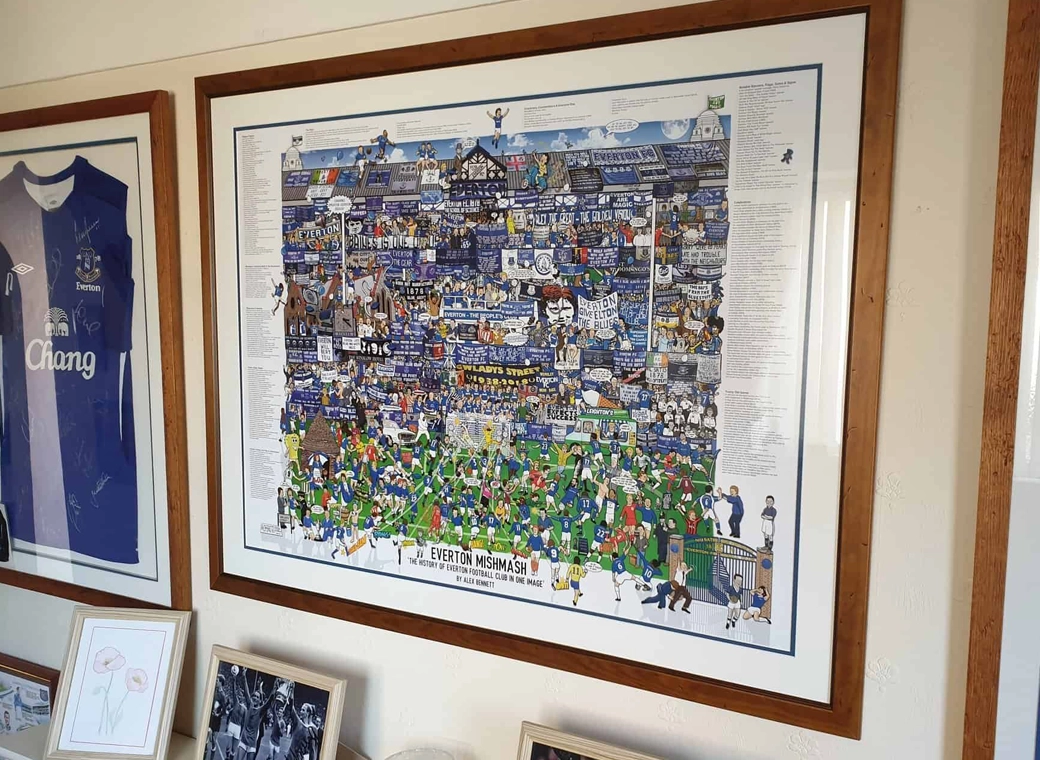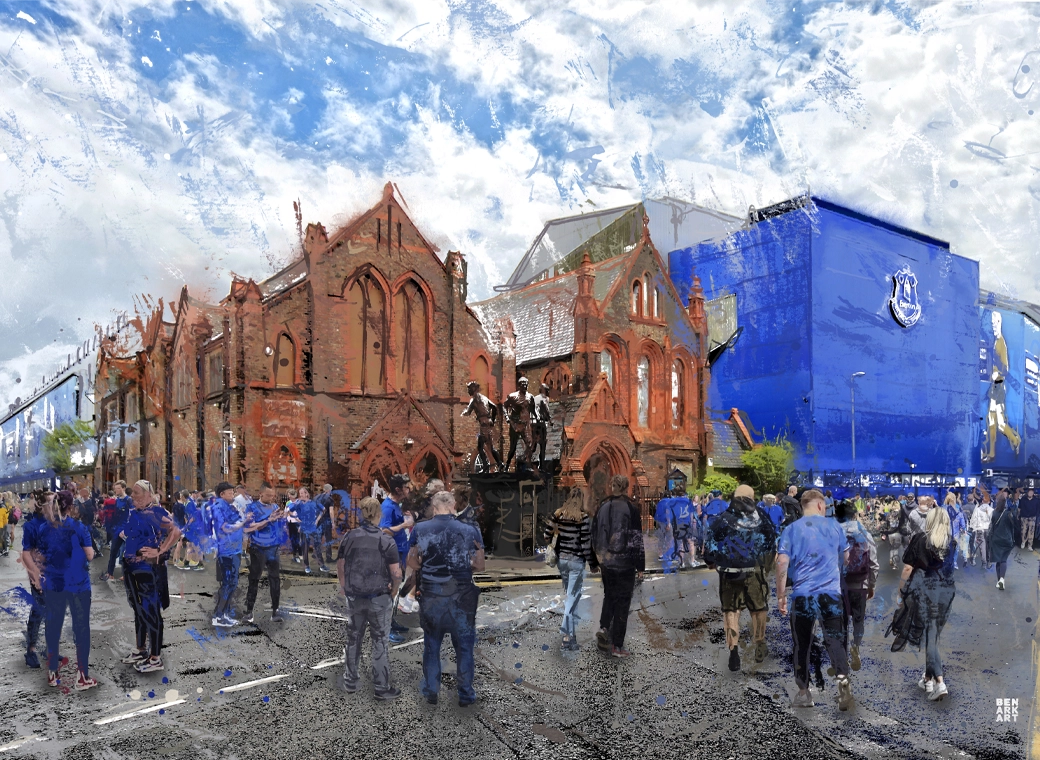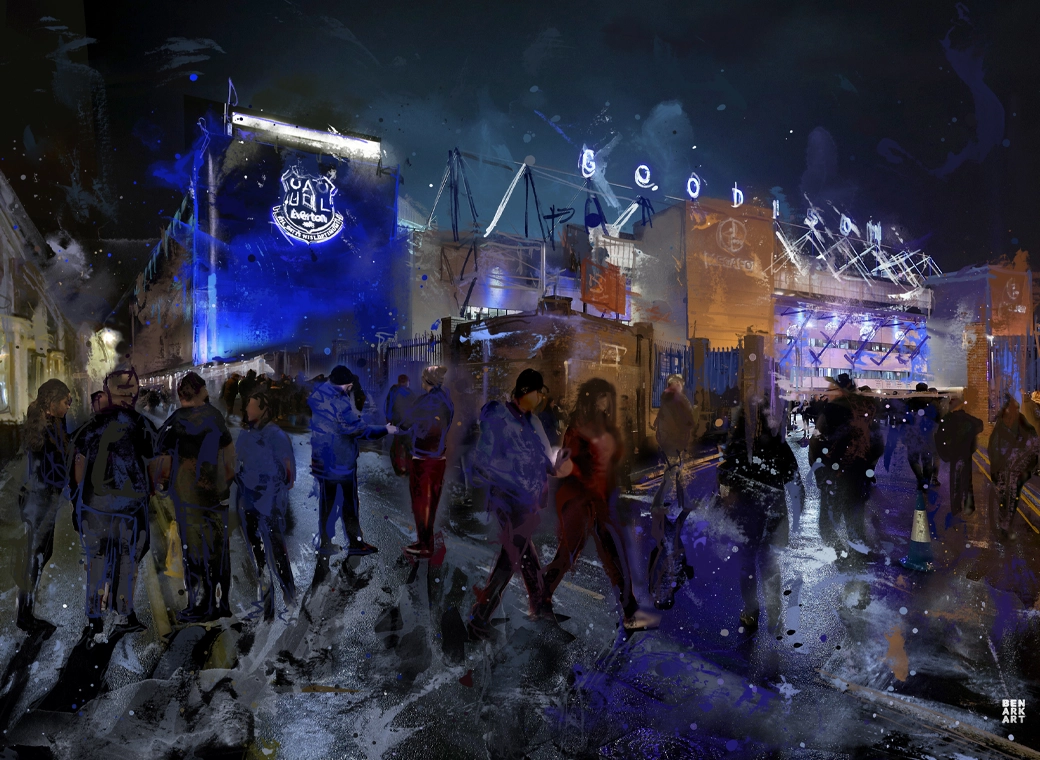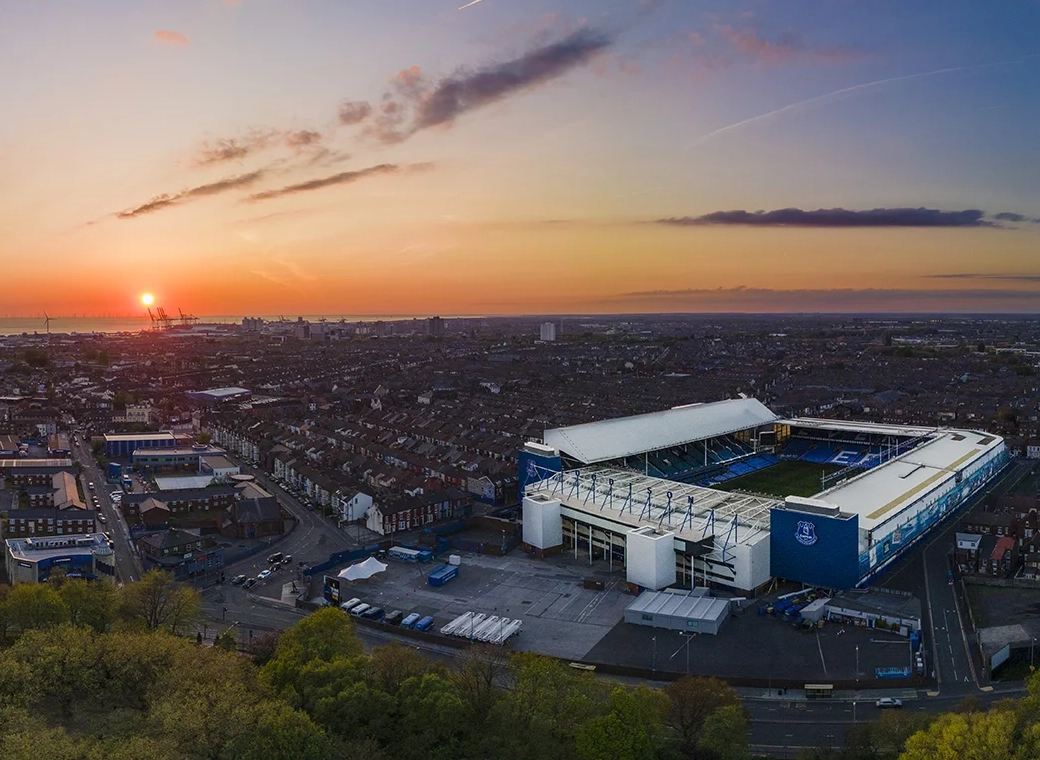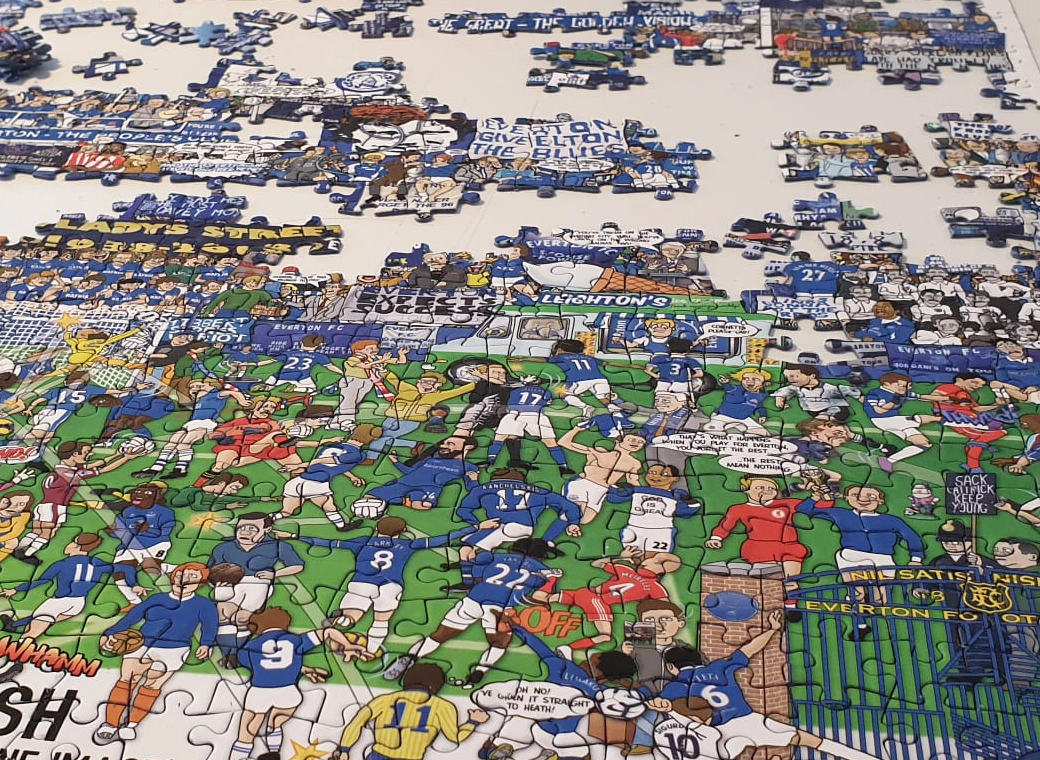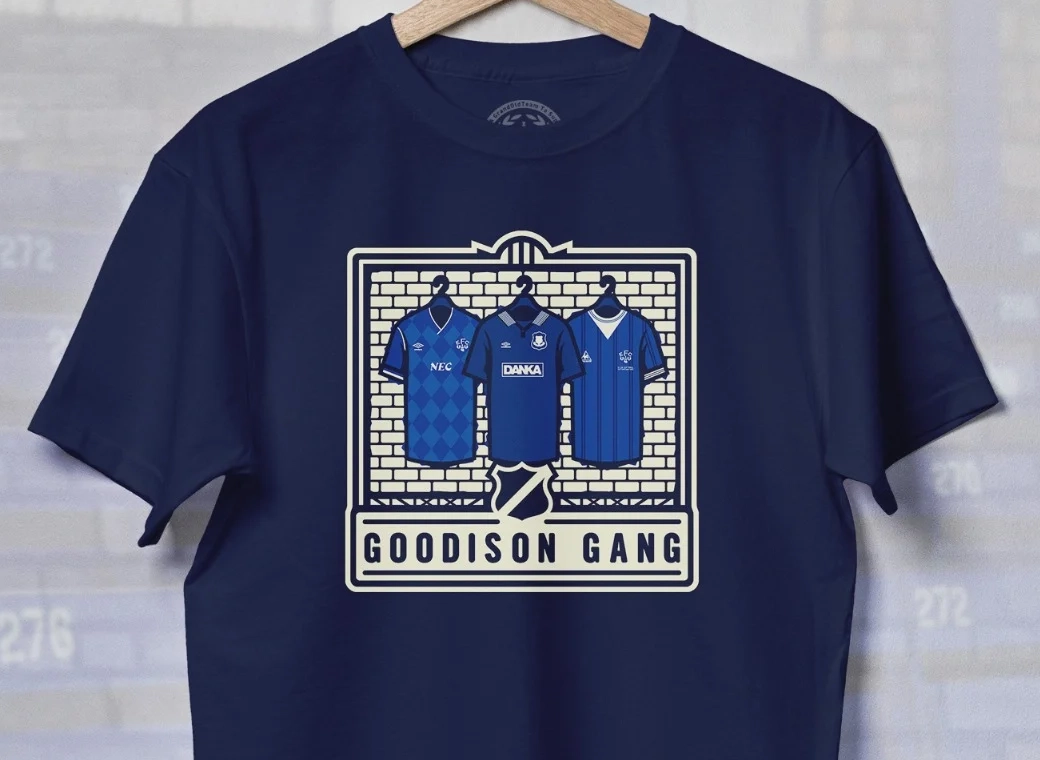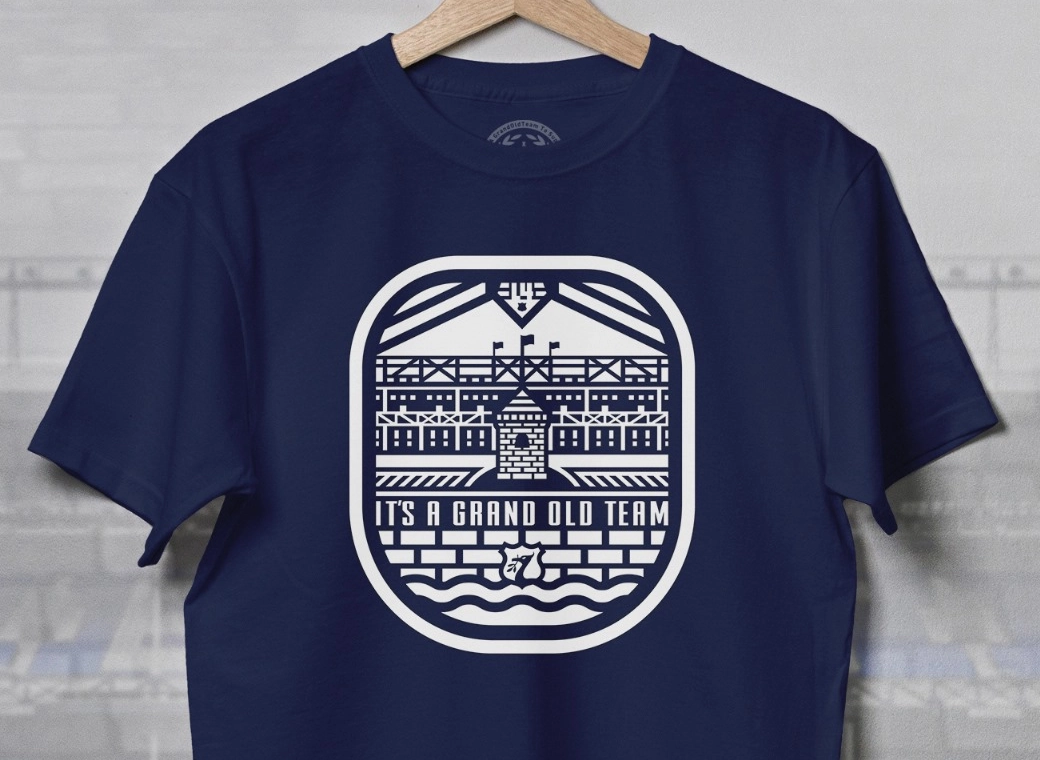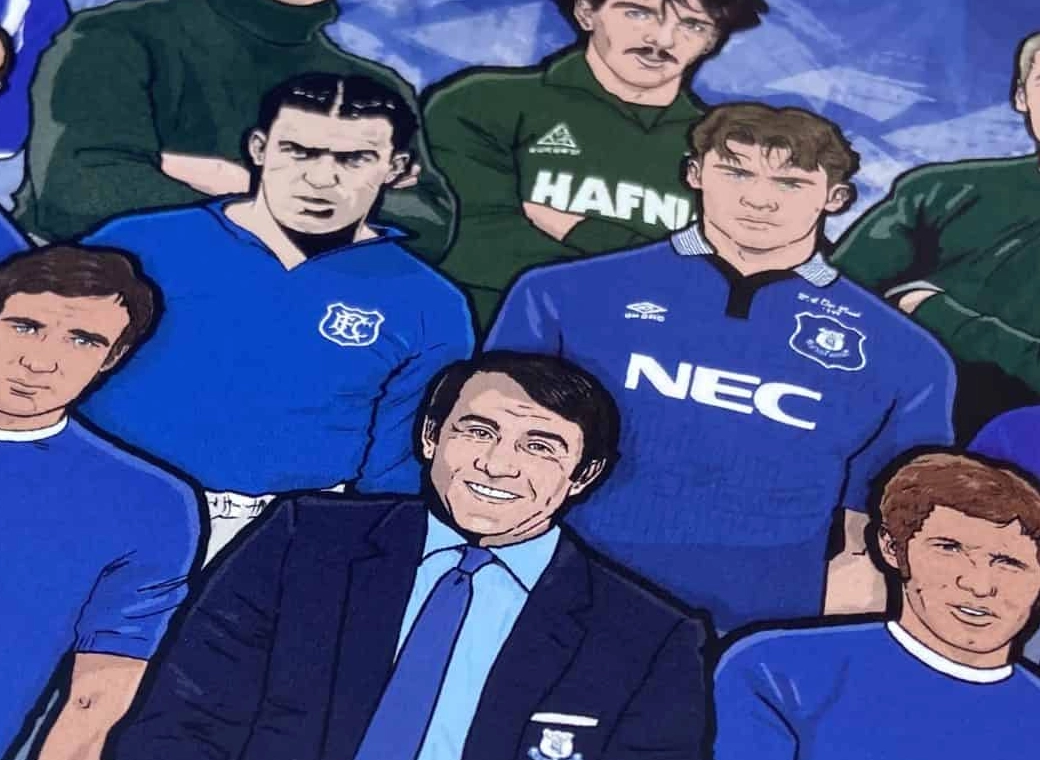-
 Turn On Christmas Radio
Turn On Christmas Radio
Bah humbug - to turn off the snow, visit your preferences and select a style that isn't Christmas.
You are using an out of date browser. It may not display this or other websites correctly.
You should upgrade or use an alternative browser.
You should upgrade or use an alternative browser.
The Frank De Boer tactical and squad breakdown thread
- Thread starter Goat
- Start date
- Status
- Not open for further replies.
The only tactical breakdown we need:
Did you see the half hour on Sky about Pienaar yesterday? Very interesting to hear him talk about Ajax, Koemann gave him a chance straight away when he was a young player, said he likes clever players like Pienaar.It's interesting because when you see a player like Steven Pienaar coming through at Ajax Amsterdam you can also see that they're doing some nice trainings over there. At the same time though you have to recognise the part someone like Ronald Koeman, a forward-thinking coach, can play in getting the players together and to work hard. It was Koeman, I think, that gave Steven his chance, and there could be a link there that would prove fruitful for Everton.
CahillsCornerFlag
Player Valuation: £70m
"Attempt through balls often"
I live for through balls, I'm in.
dholliday
deconstructed rep
BACKGROUND
In a quarter final at France ’98, the Dutch were drifting into extra time with the game poised 1-1 against Argentina. Frank de Boer, an elegant Dutch centre half, received the ball deep in his own half, loped forwards, looked up, delivered a 60 yard pass straight into the narrowest corridor where only fellow artist Dennis Bergkamp could provide sublime control and a finish to match. After a decade playing for Ajax and a fine spell at Barcelona, the two were reunited at Ajax in 2011, with de Boer at the managerial reigns and Bergkamp at his side.

As a player, Frank de Boer was influenced by two distinct Ajax stalwarts in Johan Cruyff and Louis van Gaal, the former while he was a fresh product of the Ajax youth academy and the latter when he went on to be a part of the last Ajax home-grown side to win European honours. Both Cruyff and van Gaal seemed to have influenced his managerial philosophy at Ajax, as another son of the Amsterdam club sought to restore their domestic and continental fortunes. Cruyff’s individualism and van Gaal’s universalism are both apparent in the basis of de Boer’s tactical philosophy.
TACTICAL PHILOSOPHY
Attractive football through combination play and individual expression are the key elements to please the Ajax faithful. De Boer incorporates possession in addition to these key elements for most games, although he has proved to be tactically flexible in big matchups, especially away from home where he has opted for a more direct approach.
In the sense of van Gaal’s universalism, this means that every single player is available for support while attacking and in the absence of ball possession, every player presses aggressively in order to transition quickly. Cruyffian individualism is also expressed through their quick combination play to release a man and through dribbling on the wings.
De Boer is true to Ajax’s 4-3-3 with a balance of the tactical ideals of Cruyff and van Gaal. He incorporates van Gaal’s sense of detail in defensive organization and pressing, and Cruyff’s favoured ball circulation and positional interchange in build-up play. He also tends to rely on the intelligence of players to do what the game demands of them and as such his tactics form a framework more than a static system of play. This understandably leads to comparisons with thetotaalvoetbal of the 1970s and the contemporary Barcelona abound, but limited finances at the club mean the reliance on youth is their best hope of continuing their domestic revival and initiating one on the continental front.
Offensive Organization: Possession and Interchange to Release the Ball to ‘Direct’ Wingers
Ajax build from the back as part of de Boer’s philosophy to play with possession. They play with positional interchange to draw the opponent out of their spaces, often with the intention of finding a pass to one of the channels. Unlike Barcelona who overload the channels to switch the point of play with their passing, de Boer often employs quick, direct wingers like Anwar El Ghazi, Ricardo Kishna and Lucas Andersen for his midfielders to release the ball to, before they take on defenders in 1v1 or 2v1 situations. This balance is necessary to please the Ajax faithful who are not fond of excessive horizontal passing with no intention to combine and penetrate on the flanks. This is also good management on de Boer’s part to find a balance in incorporating the young, tricky dribblers from the Ajax academy, without being overly direct.


Offensive Transition: Vertical Penetration through the Center
When Ajax get the ball wide, for the most part they are doing one of two things – drawing the opposition out before circulating the ball in midfield to keep possession or playing directly to the wingers as stated previously. In the former case, they are likely seeing the game out against lower ranked opposition who have likely tired after pressing the Amsterdam club for most of the game. In the transition from defense to offense however, de Boer’s team play with directness and verticality to exploit the spaces left by defenders out of position. Their vertical passing allows for quick, direct combinations before playing the ball through the center towards goal.

Offensive Transition
Defensive Organization: Single Midfield Block Denying Passing Lanes
Off the ball, de Boer’s Ajax tend to defend deep, setting up a compact midfield block with five midfielders behind the ball (4-5-1). This reduces the penetration and tends to be a simpler approach compared that of other young managers like Thomas Tuchel who have variations in the shape of their defensive blocks. De Boer’s simplified approach has proven to be successful domestically, considering the youthfulness and primarily offensive mind-set of the players from the Ajax academy in the first team. The team presses in response to triggers such as pressing a receiving player who is facing his own goal, or when the receiving player is pinned to the touchline.
Defensive Organization
Defensive Transition: Compact Shift to One Side of the Field
When de Boer’s Ajax concede possession in midfield with numbers behind the ball, they reduce the space and passing options to form a compact block that shifts towards the channel nearest to the player in possession. If they do not have numbers behind, the striker and one of the wingers press in their attacking third while the midfielders behind them recover their shape. With the play forced to one side, the nearest defender to the ball is able to press the opposition player with the ball to reduce his options, potentially forcing the ball out of play or recovering the ball to transition or keep possession.
Defensive Transition
THREE CAREER DEFINING GAMES
A 2-1 win against Barcelona was vital to send Ajax to the Europa League after being knocked out of the Champions League in the 2013/14 season. On the night, they pressed and harried the Barcelona players off the ball, despite playing most of the second half with ten men. Goals from Thulani Serero and Danny Hoesen gave them a result that would have surely made Johan Cruyff smile.
A year before, de Boer’s Ajax played a key role in knocking Manchester City out of the Champions League and taking a Europa League spot for themselves. Beating a Manchester City team laden with riches with a young team of academy products was no mean feat by the Dutch side.
Rewinding to the 2010-11 season, de Boer capped his first season in charge with a 3-1 final day victory against defending champions FC Twente to secure the Eredivisie title for Ajax. This was Ajax’s 30th title, and securing it on his 41st birthday was a significant moment at the start of a promising managerial career.
THREE KEY PLAYERS DEVELOPED
Frank de Boer led Ajax’s youth academy in 2007, with Christian Eriksen (Tottenham Hotspur), Toby Alderweireld (Southampton on loan from Atletico Madrid), and Daley Blind (Manchester United) being some of the major beneficiaries of his tutelage then in the academy, and soon after in the first team when he took over the managerial role in 2010.
During his stint in the youth academy, de Boer spoke highly of Eriksen, “He’s always on the move. Quick thinking. He has eyes in his back. When you think he doesn’t see you, he sees you.” Hebelieves that Daley Blind is best suited as a central midfielder for Manchester United although he began plying his trade as a full back. Belgian defender Toby Alderweireld formed a partnership with Jan Vertonghen that provided a basis for Ajax’s 2010-11 and 2011-12 title successes, but were replaced ably as de Boer’s Ajax extended their run to four consecutive Eredivisie titles.
Blending the talented individuals of Ajax with contemporary team tactics was not Martin Jol’s cup of tea and he paid the price. Discontent with the state of the first team’s affairs, Johan Cruyff pushed for changes in 2010 which resulted in Frank de Boer’s promotion from leading the youth academy to being put in charge of the first team. With the success of four consecutive Eredivisie titles and consistent third placed group finishes in the Champions League, de Boer certainly justified this choice of appointment. He will surely be looking to build on his domestic success, within the club’s limitations, to push on for European success in the coming years.
Credit to the writer Rishad Bharucha:
http://outsideoftheboot.com/2015/07/05/tactical-philosophy-frank-de-boer/
Interesting post, where did you get that from? I've no doubt he'd do a good job for us.BACKGROUND
In a quarter final at France ’98, the Dutch were drifting into extra time with the game poised 1-1 against Argentina. Frank de Boer, an elegant Dutch centre half, received the ball deep in his own half, loped forwards, looked up, delivered a 60 yard pass straight into the narrowest corridor where only fellow artist Dennis Bergkamp could provide sublime control and a finish to match. After a decade playing for Ajax and a fine spell at Barcelona, the two were reunited at Ajax in 2011, with de Boer at the managerial reigns and Bergkamp at his side.

As a player, Frank de Boer was influenced by two distinct Ajax stalwarts in Johan Cruyff and Louis van Gaal, the former while he was a fresh product of the Ajax youth academy and the latter when he went on to be a part of the last Ajax home-grown side to win European honours. Both Cruyff and van Gaal seemed to have influenced his managerial philosophy at Ajax, as another son of the Amsterdam club sought to restore their domestic and continental fortunes. Cruyff’s individualism and van Gaal’s universalism are both apparent in the basis of de Boer’s tactical philosophy.
TACTICAL PHILOSOPHY
Attractive football through combination play and individual expression are the key elements to please the Ajax faithful. De Boer incorporates possession in addition to these key elements for most games, although he has proved to be tactically flexible in big matchups, especially away from home where he has opted for a more direct approach.
In the sense of van Gaal’s universalism, this means that every single player is available for support while attacking and in the absence of ball possession, every player presses aggressively in order to transition quickly. Cruyffian individualism is also expressed through their quick combination play to release a man and through dribbling on the wings.
De Boer is true to Ajax’s 4-3-3 with a balance of the tactical ideals of Cruyff and van Gaal. He incorporates van Gaal’s sense of detail in defensive organization and pressing, and Cruyff’s favoured ball circulation and positional interchange in build-up play. He also tends to rely on the intelligence of players to do what the game demands of them and as such his tactics form a framework more than a static system of play. This understandably leads to comparisons with thetotaalvoetbal of the 1970s and the contemporary Barcelona abound, but limited finances at the club mean the reliance on youth is their best hope of continuing their domestic revival and initiating one on the continental front.
Offensive Organization: Possession and Interchange to Release the Ball to ‘Direct’ Wingers
Ajax build from the back as part of de Boer’s philosophy to play with possession. They play with positional interchange to draw the opponent out of their spaces, often with the intention of finding a pass to one of the channels. Unlike Barcelona who overload the channels to switch the point of play with their passing, de Boer often employs quick, direct wingers like Anwar El Ghazi, Ricardo Kishna and Lucas Andersen for his midfielders to release the ball to, before they take on defenders in 1v1 or 2v1 situations. This balance is necessary to please the Ajax faithful who are not fond of excessive horizontal passing with no intention to combine and penetrate on the flanks. This is also good management on de Boer’s part to find a balance in incorporating the young, tricky dribblers from the Ajax academy, without being overly direct.


Offensive Transition: Vertical Penetration through the Center
When Ajax get the ball wide, for the most part they are doing one of two things – drawing the opposition out before circulating the ball in midfield to keep possession or playing directly to the wingers as stated previously. In the former case, they are likely seeing the game out against lower ranked opposition who have likely tired after pressing the Amsterdam club for most of the game. In the transition from defense to offense however, de Boer’s team play with directness and verticality to exploit the spaces left by defenders out of position. Their vertical passing allows for quick, direct combinations before playing the ball through the center towards goal.

Offensive Transition
Defensive Organization: Single Midfield Block Denying Passing Lanes
Off the ball, de Boer’s Ajax tend to defend deep, setting up a compact midfield block with five midfielders behind the ball (4-5-1). This reduces the penetration and tends to be a simpler approach compared that of other young managers like Thomas Tuchel who have variations in the shape of their defensive blocks. De Boer’s simplified approach has proven to be successful domestically, considering the youthfulness and primarily offensive mind-set of the players from the Ajax academy in the first team. The team presses in response to triggers such as pressing a receiving player who is facing his own goal, or when the receiving player is pinned to the touchline.
Defensive Organization
Defensive Transition: Compact Shift to One Side of the Field
When de Boer’s Ajax concede possession in midfield with numbers behind the ball, they reduce the space and passing options to form a compact block that shifts towards the channel nearest to the player in possession. If they do not have numbers behind, the striker and one of the wingers press in their attacking third while the midfielders behind them recover their shape. With the play forced to one side, the nearest defender to the ball is able to press the opposition player with the ball to reduce his options, potentially forcing the ball out of play or recovering the ball to transition or keep possession.
Defensive Transition
THREE CAREER DEFINING GAMES
A 2-1 win against Barcelona was vital to send Ajax to the Europa League after being knocked out of the Champions League in the 2013/14 season. On the night, they pressed and harried the Barcelona players off the ball, despite playing most of the second half with ten men. Goals from Thulani Serero and Danny Hoesen gave them a result that would have surely made Johan Cruyff smile.
A year before, de Boer’s Ajax played a key role in knocking Manchester City out of the Champions League and taking a Europa League spot for themselves. Beating a Manchester City team laden with riches with a young team of academy products was no mean feat by the Dutch side.
Rewinding to the 2010-11 season, de Boer capped his first season in charge with a 3-1 final day victory against defending champions FC Twente to secure the Eredivisie title for Ajax. This was Ajax’s 30th title, and securing it on his 41st birthday was a significant moment at the start of a promising managerial career.
THREE KEY PLAYERS DEVELOPED
Frank de Boer led Ajax’s youth academy in 2007, with Christian Eriksen (Tottenham Hotspur), Toby Alderweireld (Southampton on loan from Atletico Madrid), and Daley Blind (Manchester United) being some of the major beneficiaries of his tutelage then in the academy, and soon after in the first team when he took over the managerial role in 2010.
During his stint in the youth academy, de Boer spoke highly of Eriksen, “He’s always on the move. Quick thinking. He has eyes in his back. When you think he doesn’t see you, he sees you.” Hebelieves that Daley Blind is best suited as a central midfielder for Manchester United although he began plying his trade as a full back. Belgian defender Toby Alderweireld formed a partnership with Jan Vertonghen that provided a basis for Ajax’s 2010-11 and 2011-12 title successes, but were replaced ably as de Boer’s Ajax extended their run to four consecutive Eredivisie titles.
Blending the talented individuals of Ajax with contemporary team tactics was not Martin Jol’s cup of tea and he paid the price. Discontent with the state of the first team’s affairs, Johan Cruyff pushed for changes in 2010 which resulted in Frank de Boer’s promotion from leading the youth academy to being put in charge of the first team. With the success of four consecutive Eredivisie titles and consistent third placed group finishes in the Champions League, de Boer certainly justified this choice of appointment. He will surely be looking to build on his domestic success, within the club’s limitations, to push on for European success in the coming years.
TheAlmightyFloater
Player Valuation: £30m
Bored, sniff it.
Frank favours a 4-3-3, with 2 full backs, a deep lying number 10 playmaker flanked by 2 box to box midfielders, with 2 attacking wingers and a "number 9".
Using the current players in the squad, it would look like this :
Robles
Coleman - Stones - Jags - Baines
McCarthy - Barkley - Besic
Geri - Lukaku - Mirallas
Some players he "may" bring with him.
https://en.wikipedia.org/wiki/Viktor_Fischer
https://en.wikipedia.org/wiki/Riechedly_Bazoer
https://en.wikipedia.org/wiki/Jasper_Cillessen
https://en.wikipedia.org/wiki/Jaïro_Riedewald
https://en.wikipedia.org/wiki/Arkadiusz_Milik
https://en.wikipedia.org/wiki/Davy_Klaassen
And hopefully this fella.
Frank is a clever man, this is what his squad will look like, if their name aint down, Frank hasnt let them in, only "first team players" will be named :
GK
Robles
Cillessen
RB
Tete
Coleman
LB
Baines
Oviedo
Garbutt
CB
Stones
Mori
Jags
Riedwald
CM
McCarthy
Bazoer
Besic
Cleverley
DLP
Barkley
Klaassen
RW
Mirallas
Lennon
Geri
LW
Niasse
Fischer
CF
Lukaku
Millik
Tarashaji
Now clearly Ajax arent gonna let us mug off half their team, so in certains areas we would need to shop elsewhere. Now I know theres certain players missing and we will struggle to get rid of some of them, others not so much.
The noticeable name missing is Gareth Barry, who is a superb player, but I cant see him "fitting" into Franks system so could see him taking a little move to the US or China, the rest are fairly pony and I would just get rid of them all on a free.
Depending on our luck in getting rid of McGeady, Kone and the ilk, maybe we could add a little more creativity in the middle of the park alongside the Bosnian Zidane, Franks First 11 will look like this :
Cillessen
Tete - Stones - Riedelwald - Baines
Bazoer- Barkley - Besic
Geri --------------------Fischer
Lukaku
@Brownie
What do you get if you cross desperation, an Everton forum and premature ejaculation?
Answer: This thread
Interesting post, where did you get that from? I've no doubt he'd do a good job for us.
http://outsideoftheboot.com/2015/07/05/tactical-philosophy-frank-de-boer/
What do you get if you cross desperation, an Everton forum and premature ejaculation?
Answer: This thread
I always please the ladies.
Good website - interesting article on Emery as wellhttp://outsideoftheboot.com/2015/07/05/tactical-philosophy-frank-de-boer/
I always please the ladies.

Tactical Philosophy: Unai Emery
By Nachiketh Ramesh on July 23, 2015@NachikethRamesh
Share




While this website has made its name focusing on the lesser known youth of this beautiful sport, and combined it with a tinge of tactical flavour meant for the football enthusiast, we found a large gap to be exploited in terms of combining the two. This mini-series thus focuses on young managers (below the age of 45) and their tactical philosophies, deriving what got them here and where they could go. In this piece, Nachiketh Ramesh gives an in-depth insight into the in demand Unai Emery.
Background
Unai Emery’s father, grandfather and uncle were professional football players and it was in Emery’s genes to follow their footsteps. But the journey was not an easy one for the Basque. After representing Real Sociedad five times at the senior level, Emery was booted out. He spent most of his time playing for lower division clubs until an injury put an end to his playing career during his time at Lorca Deportiva.
Lorca Deportiva was the turning point in Emery’s life – the club’s president made Emery the manager of the team. Did the president play the card blindly? Or did he sense the potential in Emery? No one knows. But Emery’s team performed well and gained promotion to the second division and with it started Emery’s ascent to glory. Success at Lorca was followed by spells of over-achievement at Almeria and Valencia. With Almeria, Emery won promotion from Liga Adelante in the first season and guided La Union to eighth place in the first season in the top flight.

At the Mestalla he achieved 3 consecutive third place finishes in the league even after losing world class players every season. However, as his tenure came to an end Emery had to face unsatisfied fans and a board that needed something more than just a third place finish – a trophy to attest its place amongst those with power, Barcelona and Real Madrid.
After a brief and not-so-good time with Spartak Moscow, Emery returned to Andalusia to manage Sevilla. Sevilla was having a torrid period financially which resulted in poor performances on the field. Sevilla needed him to stabilize the team and Emery had never won a major trophy in his lifetime. A win-win situation for both the parties. Sevilla served as a platform for him to accomplish his dreams and Emery helped the club back to glory.
Tactical Philosophy
Of the four Spanish clubs he has managed so far, none was in a stable condition when Emery took over – some of the clubs were famous but were debt ridden while the others just could not find the money to back their manager. So, Emery had to adjust himself to these constraints and this might be one of the reasons for the pragmatic approach he often adopts. Unai Emery usually favors the 4-2-3-1 formation with a touch of 4-3-3 to it. Great flexibility in the midfield is one of the characteristics of his teams. Ever since his time at Valencia, Emery has been using a somewhat similar formation.

Defending when the ball is in the attacking third: Pressing the goal-keeper

It is noticeable how Sevilla are pressing. The players are positioned such that the opponents (Barcelona here) are compelled to spread out. The two wingers are in narrow positions, occupying the region at the edge of the box – they have pinned back the center backs and forced the wing backs wide. The striker has fallen back to press alongside the central attacking midfielder – they have occupied the two central midfielders. The two deep midfielders are keeping track of the movements of any unmarked players in the central region and the wingbacks as well. They have formed a structure that resembles an “H”.
For the goal-keeper the safest option is to pass to either one of the wing backs. Suppose the ball is played to the right wing back, then the 3 Sevilla players positioned on his side can press and force him to make an error or lose the ball cheaply.
The pressing has stretched the opposition and once the ball is won back, Sevilla can use the space well to play out threatening passes. Also the huge gaps between the opposition players means they can’t counter-press with ease and even if they manage to press, then it will just create free spaces in some other part.
The structures don’t always resemble a set pattern. It depends on the opponents.
Defending when the ball is in the midfield zone: Forming structures that help in quick transition

Sevilla, as the photo depicts, are pressing Messi who is in the deep midfield region. He is being put under pressure by the left-back and the left winger. Now, if either one of them manage to nick the ball from him (they do!) then it poses a serious threat to the opponents (almost scored).
As in the previous case, the midfielders and the forward have formed a structure, only that it is not an “H” shape but an odd hexagon. The ball, if put into the center zone of this structure, makes it easy for Sevilla to win. So Messi’s options are to dribble or to pass back. If passed back to the center back or the right back, then the forwards can impose themselves on the backline to win the ball.
If Messi loses the ball, then the striker, along with the central attacking midfielder and the winger in the far end, can attack the open spaces as either one of the ball winners bring the ball near the box.
Also note the pressing patterns of Sevilla in both the cases. They have a good structure that enables them to have access to the ball. Unlike many other teams who face Barcelona, Sevilla have exploited the spaces properly and pressed. If too many players try to press a player when playing against opponents like Barcelona, it can lead to exposure of defense if the pressing trap isn’t executed properly.
The two players circled in red are the defensive midfielders of the 4-2-3-1. They position themselves in such a manner that they keep enough pressure on the opponents in the central region and don’t open up their defense too much by pushing higher.
Defending against high defensive line and defending the ball in the defensive third: 4-4-2 and conceding the wings

While defending against teams that use a high defensive line, Emery usually deploys a 4-4-2 structure in the defensive third. The central attacking midfielder moves high-up to play as the second striker – forming a partnership with the striker in pressurizing the back-line. The team usually uses a blend of zonal and man marking system – the midfielder players are sought after and marked while the wide players are marked depending on the orientation of the ball.
Here, Sergio Busquets cannot play the ball through the middle – the two central midfielders are marked. He can, however, play it out wide to the wing backs in advanced positions. The orientation of Sevilla is to the left side of the pitch (from their point of view) and hence, have man marked the right winger and right wing back of the opposition (Neymar, on Barcelona’s left wing, is marked only because he has drifted inside).
The other wing back is free with acres of space in front of him and Sevilla are happy to see the opponents play out the ball to the wide regions. Once Busquets sends the ball to the left wing of Barcelona, Sevilla will orient accordingly and the players on the right wing of Barcelona will be relieved.
Attack: Midfield organization

The most interesting aspect of Emery’s game is the three central midfielders. In the Sevilla team of 2014-15, it was Ever Banega who usually started as the central attacking midfielder. Grzegorz Krychowiak and Vincente Iborra played behind him.
As the game unfolds, Banega would fall back into deeper positions to collect and play out the ball. The resulting gap between the opposition’s lines was filled by Iborra. In the defensive phase, Banega offers support for the striker and in drawing out pressing patterns. He allows the team to have more fluidity in the midfield region while attacking and provides a good number of defensive options off the ball.
In this case, Banega has dropped to defensive midfield and has done so in order to have better control over the ball. Had Krychowiak stayed a bit up field, Banega would have stayed amidst the opposition midfielders.
Also Banega’s movement is followed by the left winger Vitolo, who has moved to the space left open by the Argentinian. This has created an overload on the right wing of Sevilla. Sevilla create such overloads to attain numerical advantages on some parts of the pitch. When the opponents switch their focus to the overloaded region, the ball will be moved quickly into free space.
Ivan Rakitic played like a box to box midfielder for Sevilla in his final season at the club. He was instrumental in winning the Europa League. A similar role is played by Banega.
Winning the ball by pressing and quick counter attacks:

When up against superior teams like Barcelona, the technique used by Sevilla is quite intriguing. Rather than playing into the hands of the opponents, they try to make things tough by executing well worked out plans.
Here, Banega is forcing Busquets to play the ball to Iniesta. Barcelona have five players in the half-space region, the same number as Sevilla. Barcelona have superiority in terms have quality and space utilization but they are very much unaware of the trap laid out by Emery’s players.
When the ball is played out to Iniesta (action 1), Sevilla players press and close down the space and cut out Iniesta’s passing options (action 2). As soon as the ball is won, Bacca can run at the defense of the opponents. So can Vitolo. Banega becomes the free man, with space ahead of him, to make use of the ball while the Barcelona defense is made vulnerable.
Sevilla defend by pressing and drawing out patterns that help in quick transition. They attack by either counter attacking from their own half or breaking down the attacking moves of the opponents in the attacking third itself.
Three career defining matches
Almeria 2 – Real Madrid 1: Almeria finished the 2007-08 season of La Liga in the top half of the table. To cap such a wonderful campaign was a sweet victory over Real Madrid in Estadio Mediterraneos. It was a 2-1 win – the winning goal scored by Alvaro Negredo.
Valencia 3 – Sevilla 1: The second leg of the semifinals of Europa League 2013-14 – against Valencia in Mestalla – was the match that set into motion the dreams of Sevilla players, and thousands of fans and it was the goal scored in the fourth minute of the extra-time that instilled the winning spirit in Unai Emery’s team. The goal, scored by Stephane M’bia, put Sevilla in the flight to Turin in place of Emery’s previous club. This match can be considered as the most important, in Sevilla’s back-to-back win of Europa League titles.
Sevilla 2 – Barcelona 2: Most of us will be remembering this match, the match in which Barcelona, led by Luis Enrique, let a two goal cushion slip by and dropped two precious points. The severity of the title race was so much that, Sevilla did not get sufficient credit for their exploits. It was a display of the never-give-up mentality of Emery’s team.
Three key players developed
Unai Emery’s clubs were usually the donors of talented players to the rich clubs and sugar-daddies. So, it was a necessity for him to dig up fresh talents from the youth academies every season. The departure of key players paved the way for the talented youngsters to showcase their potentials. Emery has developed many players, but Juan Mata, Jordi Alba and Ever Banega are the most important ones. Mata, now at Manchester United, won almost everything with Chelsea and was a core part of their Champions League and Europa League winning team. Jordi Alba, another product of Emery’s Valencia, recently won the treble and played a crucial part in Spain’s Euro 2012 victory. Ever Banega, part of Emery’s Valencia squad, was brought last summer and has done a good job in filling Ivan Rakitic’s boots.
http://outsideoftheboot.com/2015/07/05/tactical-philosophy-frank-de-boer/
I always please the ladies.
dholliday
deconstructed rep
What about this fella? He topped our next-manager poll back in 2013 and is available again:
Tactical Philosophy: Brendan Rodgers
Background
Before dreaming of football philosophies, Brendan Rodgers dreamed of becoming an accomplished footballer himself. He played for Reading as a teenager and even captained the youth team. Unfortunately, the dream of playing senior professional football was cut short by a genetic knee condition, forcing him to retire at the early age of 20.
The Irishman, however, stayed at Reading as a youth coach and would go on to become the Academy Director. In between, he paid frequent visits to Spain and learnt Spanish. More importantly, he began to understand the Spanish language of football.

The path of footballing education soon led him to Jose Mourinho at Chelsea. Mourinho himself had built a career through meticulous study and tactical analysis of football, and perhaps saw a bit of himself in Rodgers. The Portuguese manager made Rodgers in-charge of the youth team and, subsequently, the reserves of the Blues.
The desire of expressing his passion for football after a failed career as a player, accompanied by his fascination for the Spanish way of playing and the experience of working under a tactician as accomplished as Mourinho has made Rodgers the man of football that he is today.
His approach to football is testament to this.
Tactical Philosophy
In his early years as manager of Watford and then Reading, Rodgers was unsure of his playing style. There would be frequent experiments with an English 4-4-2 formation, which was clearly at odds with the pass-and-move style he so coveted.
At Reading, however, things did begin to fall into place. Rodgers brought on loan Gylfi Sigurdsson, an attacking midfielder who played behind the striker. The presence of Sigurdsson in midfield as a creative as well as a goal-scoring outlet convinced Rodgers that the key to dominate football lay in midfield, and that is where his team should be the strongest.
His subsequent move to Swansea could not have been better-timed. Swansea had established a tiki-taka style through Roberto Martinez and Paulo Sousa, and Rodgers got the perfect platform to exhibit his philosophy. For this, he brought Sigurdsson on loan once again and assembled his team as seen below-

The result was an unconventional amalgamation of two apparently contrasting styles.
The presence of attacking full-backs (Taylor and Rangel), a holding midfielder (Leon Britton), a playmaker with a metronomic, Xavi-like way of passing and moving (Joe Allen) and inverted wingers (Sinclair) was clearly an off-shoot of tiki-taka and ‘juego de posicion’, whose modern-day model is Pep Guardiola’s Barcelona.
The system of Rodgers at Swansea was, therefore, predominantly based on:-
In doing so, Rodgers added a pinch of Mourinho’s pragmatism to Guardiola’s ideals, thus ensuring he could play possession football without compromising results.
Swansea’s philosophy:

Leon Britton passes to Joe Allen

Allen, finding space behind the opposition marker, runs past him.

Allen passes to Sinclair on the left wing (not in picture)

Sinclair loses the ball and, immediately, Swansea start pressing to get the ball back, starting from their forward, Borini

Allen comes from midfield to cut off passing lanes and apply pressure

Alan Tate, the left back, comes up to press on the wing. Allen stays alive to receive the ball.

Allen finally intercepts and heads the ball out to Sinclair

Sinclair, instead of running at the defender, passes the ball back to Tate, who has now dropped slightly deeper into space.

Tate now switches wings to find Nathan Dyer in potential openings on the right wing.
In 2012, Liverpool came calling. There were lofty expectations at the Kop End, a desire to return to the glory days of Shankly. On the other hand, Rodgers scarcely had the personnel to fit his philosophy- players like Jordan Henderson, Stuart Downing and Andy Carroll were more suited to the traditional 4-4-2 system.
After a difficult first 6 months, Rodgers brought in Coutinho and Sturridge and assembled his team thus:

Recognizing that, in Luis Suarez, he had a forward of extraordinary ability and personality, Rodgers built a team around the Uruguayan’s attacking prowess. From a possession-based team, the Reds turned into a high-pressing, vertically passing group which launched counter-attacks at breakneck speeds.
The skill of Suarez upfront was complemented by the pace of Daniel Sturridge, while Raheem Sterling, with his mazy dribbling, provided channels for the forwards to run into. Steven Gerrard was re-invented as a regista, ably assisted by Coutinho in playmaking duties and Henderson flourished in the box-to-box role.
The Liverpool of 2013/14 turned out to be an efficient counter-attacking unit and showcased Rodgers’ ability to adapt and evolve. When he knew that his Swansea tactics had little chances of success, he turned to man-management and built a system based on the strengths of individual players. The message was clear- when a manager’s ideas do not work, he turns to his players and knowing his players’ strengths and weaknesses needs to be a part of his tactical philosophy as much as any pre-conceived ideal.
He had been hired to make Liverpool the English Barcelona; he ended up making them the English Dortmund. Not that the Anfield faithful were complaining.
Three Career-Defining Games
The 4-2 win against former employers Reading in the Championship Play-off Final (2010/11) with Swansea was an important victory for Rodgers. Not only did he confirm the Welsh club’s Premier League status, but also quelled doubts over the success of possession-based team-play in England, at least at the Championship Level.
His debut season in the Premier League with Swansea dispelled any remaining apprehensions about his philosophy. In a stellar first season, the Swans ended in 11th position. On the way, they won against Chelsea and eventual-champions Manchester City at home, and held Liverpool to a 0-0 draw at Anfield, receiving a standing ovation from the Liverpool fans at the end of the match.
Their most significant achievement, however, was beating Arsenal 3-2 at home. Arsenal, in the past decade, has been the team to watch when it comes to playing flowing, attractive, passing football. By winning against the Gunners, Swansea and Rodgers announced their arrival on the English scene as an accomplished possession-based team.
The move to Liverpool brought about a tactical evolution in Rodgers’ philosophy and nowhere was this more evident than in the 5-1 win against Arsenal at Anfield. From beating the Gunners at their own game, Rodgers adopted almost opposite tactics this time and targeted Arsenal’s soft centre. The result- 4 goals scored in the first 20 minutes.
Three Key Players Developed
“There comes a time when you have to let them go (and play), because sometimes you never know until they are in the arena, they just want that opportunity.
“I (realised) that I could help young players and prepare them, and if I told them they were going to play they would play. Then they would be given the opportunity.
“Each player is different, you look at their pathway and what is going to be best for them but ultimately I want them to play for the first team, to feel that passion, to feel the love of the supporters and to be given the opportunity to show they can be a professional.”
Rodgers acquired considerable experience in developing youth during his time as youth coach at Reading and then Chelsea. That, along with his aforementioned views, has turned him into an ideal manager for youngsters.
Joe Allen is one such player. Under Rodgers’ tutelage, the diminutive yet gifted midfielder became a regular starter at Swansea and followed Rodgers to Liverpool in 2012.
At Liverpool, Rodgers has helped winger Raheem Sterling blossom into one of the most highly-rated youngsters in England. The 22-year old would be ill-advised to leave Rodgers for Manchester City at this stage of his career. For this, he needs to look no further than Scott Sinclair, another talented winger who was prolific at Swansea under Rodgers, but went to City too early and hasn’t played regularly since.
The player for which Rodgers deserves the most credit for, however, is Jordan Henderson. Henderson was one among the several British signings made under Kenny Dalglish and was unfortunately made the scapegoat for Liverpool’s failures. With Rodgers’ arrival, he has developed into a capable box-to-box midfielder. More importantly, he oozes confidence, determination and tactical awareness on the field and is set to be made captain of Liverpool with the departure of Steven Gerrard.
Brendan Rodgers’ tactical philosophy is not without fault. The Irishman is occasionally guilty of placing too much faith in youngsters instead of proven footballers. His recruitment policy at Liverpool has not been immaculate either.
Having said that, it is safe to say he has shown enough to be considered one of the most tactically innovative young managers in football. What’s more, he is not afraid of making necessary changes in formation or personnel when even more experienced managers would hesitate.
What Rodgers needs now is a touch of reality to go with his imagination, similar to the Mourinho-like adjustments he made to Swansea’s philosophy. For him, that might well turn out to be the difference between greatness and oblivion.
Tactical Philosophy: Brendan Rodgers
Background
Before dreaming of football philosophies, Brendan Rodgers dreamed of becoming an accomplished footballer himself. He played for Reading as a teenager and even captained the youth team. Unfortunately, the dream of playing senior professional football was cut short by a genetic knee condition, forcing him to retire at the early age of 20.
The Irishman, however, stayed at Reading as a youth coach and would go on to become the Academy Director. In between, he paid frequent visits to Spain and learnt Spanish. More importantly, he began to understand the Spanish language of football.

The path of footballing education soon led him to Jose Mourinho at Chelsea. Mourinho himself had built a career through meticulous study and tactical analysis of football, and perhaps saw a bit of himself in Rodgers. The Portuguese manager made Rodgers in-charge of the youth team and, subsequently, the reserves of the Blues.
The desire of expressing his passion for football after a failed career as a player, accompanied by his fascination for the Spanish way of playing and the experience of working under a tactician as accomplished as Mourinho has made Rodgers the man of football that he is today.
His approach to football is testament to this.
Tactical Philosophy
In his early years as manager of Watford and then Reading, Rodgers was unsure of his playing style. There would be frequent experiments with an English 4-4-2 formation, which was clearly at odds with the pass-and-move style he so coveted.
At Reading, however, things did begin to fall into place. Rodgers brought on loan Gylfi Sigurdsson, an attacking midfielder who played behind the striker. The presence of Sigurdsson in midfield as a creative as well as a goal-scoring outlet convinced Rodgers that the key to dominate football lay in midfield, and that is where his team should be the strongest.
His subsequent move to Swansea could not have been better-timed. Swansea had established a tiki-taka style through Roberto Martinez and Paulo Sousa, and Rodgers got the perfect platform to exhibit his philosophy. For this, he brought Sigurdsson on loan once again and assembled his team as seen below-

The result was an unconventional amalgamation of two apparently contrasting styles.
The presence of attacking full-backs (Taylor and Rangel), a holding midfielder (Leon Britton), a playmaker with a metronomic, Xavi-like way of passing and moving (Joe Allen) and inverted wingers (Sinclair) was clearly an off-shoot of tiki-taka and ‘juego de posicion’, whose modern-day model is Pep Guardiola’s Barcelona.
The system of Rodgers at Swansea was, therefore, predominantly based on:-
- Possession (i.e. attacking with the ball and then resting with the ball)
- Moving the ball from side-to-side to open up spaces
- Defending in zones rather than in a fixed formation
In doing so, Rodgers added a pinch of Mourinho’s pragmatism to Guardiola’s ideals, thus ensuring he could play possession football without compromising results.
Swansea’s philosophy:

Leon Britton passes to Joe Allen

Allen, finding space behind the opposition marker, runs past him.

Allen passes to Sinclair on the left wing (not in picture)

Sinclair loses the ball and, immediately, Swansea start pressing to get the ball back, starting from their forward, Borini

Allen comes from midfield to cut off passing lanes and apply pressure

Alan Tate, the left back, comes up to press on the wing. Allen stays alive to receive the ball.

Allen finally intercepts and heads the ball out to Sinclair

Sinclair, instead of running at the defender, passes the ball back to Tate, who has now dropped slightly deeper into space.

Tate now switches wings to find Nathan Dyer in potential openings on the right wing.
In 2012, Liverpool came calling. There were lofty expectations at the Kop End, a desire to return to the glory days of Shankly. On the other hand, Rodgers scarcely had the personnel to fit his philosophy- players like Jordan Henderson, Stuart Downing and Andy Carroll were more suited to the traditional 4-4-2 system.
After a difficult first 6 months, Rodgers brought in Coutinho and Sturridge and assembled his team thus:

Recognizing that, in Luis Suarez, he had a forward of extraordinary ability and personality, Rodgers built a team around the Uruguayan’s attacking prowess. From a possession-based team, the Reds turned into a high-pressing, vertically passing group which launched counter-attacks at breakneck speeds.
The skill of Suarez upfront was complemented by the pace of Daniel Sturridge, while Raheem Sterling, with his mazy dribbling, provided channels for the forwards to run into. Steven Gerrard was re-invented as a regista, ably assisted by Coutinho in playmaking duties and Henderson flourished in the box-to-box role.
The Liverpool of 2013/14 turned out to be an efficient counter-attacking unit and showcased Rodgers’ ability to adapt and evolve. When he knew that his Swansea tactics had little chances of success, he turned to man-management and built a system based on the strengths of individual players. The message was clear- when a manager’s ideas do not work, he turns to his players and knowing his players’ strengths and weaknesses needs to be a part of his tactical philosophy as much as any pre-conceived ideal.
He had been hired to make Liverpool the English Barcelona; he ended up making them the English Dortmund. Not that the Anfield faithful were complaining.
Three Career-Defining Games
The 4-2 win against former employers Reading in the Championship Play-off Final (2010/11) with Swansea was an important victory for Rodgers. Not only did he confirm the Welsh club’s Premier League status, but also quelled doubts over the success of possession-based team-play in England, at least at the Championship Level.
His debut season in the Premier League with Swansea dispelled any remaining apprehensions about his philosophy. In a stellar first season, the Swans ended in 11th position. On the way, they won against Chelsea and eventual-champions Manchester City at home, and held Liverpool to a 0-0 draw at Anfield, receiving a standing ovation from the Liverpool fans at the end of the match.
Their most significant achievement, however, was beating Arsenal 3-2 at home. Arsenal, in the past decade, has been the team to watch when it comes to playing flowing, attractive, passing football. By winning against the Gunners, Swansea and Rodgers announced their arrival on the English scene as an accomplished possession-based team.
The move to Liverpool brought about a tactical evolution in Rodgers’ philosophy and nowhere was this more evident than in the 5-1 win against Arsenal at Anfield. From beating the Gunners at their own game, Rodgers adopted almost opposite tactics this time and targeted Arsenal’s soft centre. The result- 4 goals scored in the first 20 minutes.
Three Key Players Developed
“There comes a time when you have to let them go (and play), because sometimes you never know until they are in the arena, they just want that opportunity.
“I (realised) that I could help young players and prepare them, and if I told them they were going to play they would play. Then they would be given the opportunity.
“Each player is different, you look at their pathway and what is going to be best for them but ultimately I want them to play for the first team, to feel that passion, to feel the love of the supporters and to be given the opportunity to show they can be a professional.”
Rodgers acquired considerable experience in developing youth during his time as youth coach at Reading and then Chelsea. That, along with his aforementioned views, has turned him into an ideal manager for youngsters.
Joe Allen is one such player. Under Rodgers’ tutelage, the diminutive yet gifted midfielder became a regular starter at Swansea and followed Rodgers to Liverpool in 2012.
At Liverpool, Rodgers has helped winger Raheem Sterling blossom into one of the most highly-rated youngsters in England. The 22-year old would be ill-advised to leave Rodgers for Manchester City at this stage of his career. For this, he needs to look no further than Scott Sinclair, another talented winger who was prolific at Swansea under Rodgers, but went to City too early and hasn’t played regularly since.
The player for which Rodgers deserves the most credit for, however, is Jordan Henderson. Henderson was one among the several British signings made under Kenny Dalglish and was unfortunately made the scapegoat for Liverpool’s failures. With Rodgers’ arrival, he has developed into a capable box-to-box midfielder. More importantly, he oozes confidence, determination and tactical awareness on the field and is set to be made captain of Liverpool with the departure of Steven Gerrard.
Brendan Rodgers’ tactical philosophy is not without fault. The Irishman is occasionally guilty of placing too much faith in youngsters instead of proven footballers. His recruitment policy at Liverpool has not been immaculate either.
Having said that, it is safe to say he has shown enough to be considered one of the most tactically innovative young managers in football. What’s more, he is not afraid of making necessary changes in formation or personnel when even more experienced managers would hesitate.
What Rodgers needs now is a touch of reality to go with his imagination, similar to the Mourinho-like adjustments he made to Swansea’s philosophy. For him, that might well turn out to be the difference between greatness and oblivion.
I wouldn't expect Frank de Boer to do alot of shopping at Ajax necessarily. Because he won't do that to his club, but also because many of those players are still very young. Although I'm sure he'd love to bring Bazoer, but he seems destined for a club like Barcelona, at least it seems to be what he's aiming for. He turned down Napoli after Ajax accepted 25 million euros + bonusses for him. Fischer isn't even a starter at Ajax, Younes has overtaken him. He'd probably sooner look at some other players in the Dutch league, Ziyech, Vincent Janssen, Haller, Willems. Perhaps Chelsea's Van Ginkel, who's done very well for PSV. Or even Wijnaldum now that Newcastle are looking to get relegated. Maybe Janmaat too? Van der Wiel is free this summer I think, but not sure he left with Ajax and De Boer on good terms. Vlaar has returned from injury at AZ and will be free too this summer. Just throwing some names out there without really taking our squad in mind.
Darrenc34
Player Valuation: £8m
Not a decent one anyways!I don't think we'll get a manager to be honest.
I don't think we'll get a manager to be honest.
Oh Browns.
- Status
- Not open for further replies.






